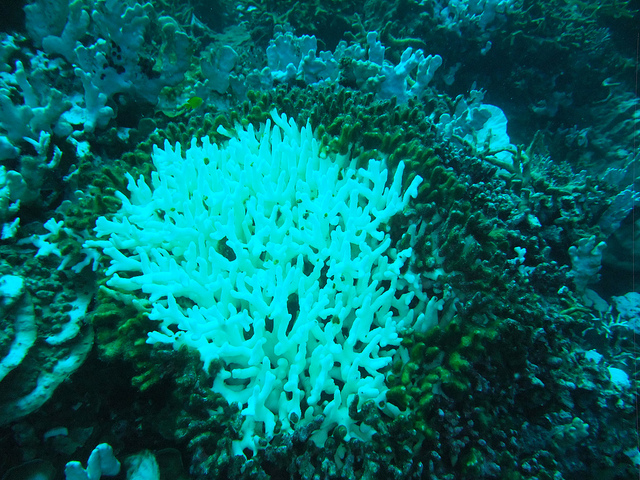Report on Marine Dive Tourism’s Contribution to Sustainable Development
Introduction and Research Scope
A global study was conducted to ascertain the economic impact of marine dive tourism and its role in advancing ocean conservation and supporting local communities, aligning with multiple Sustainable Development Goals (SDGs). The research methodology involved:
- Compilation of a database of over 11,500 dive operators in 170 countries using data from Google Maps and PADI, validated by local experts.
- An online survey completed by 425 dive businesses across 81 countries to gather financial and operational data.
- Economic analysis of direct and indirect spending from an estimated nine to fourteen million annual recreational divers.
Economic Impact and Support for SDG 8 (Decent Work and Economic Growth)
The analysis reveals that dive tourism is a significant economic driver, directly contributing to the targets of SDG 8 by promoting sustained, inclusive, and sustainable economic growth and providing decent work.
- Direct Revenue: Annual spending on diving activities generates between $900 million and $3.2 billion.
- Total Economic Contribution: When including indirect spending on local services such as hotels, food, and transport, the total annual economic impact is estimated to be between $8.5 billion and $20.4 billion.
This positions dive tourism as a key component of a sustainable Blue Economy, capable of generating substantial income for coastal communities without resorting to extractive practices.
Conservation Imperatives and Alignment with SDG 14 (Life Below Water)
The study underscores the intrinsic link between dive tourism and marine conservation, highlighting its contribution to SDG 14, which aims to conserve and sustainably use the oceans, seas, and marine resources.
- Dive operators have a vested interest in healthy ecosystems and abundant marine life, making them natural allies in conservation efforts.
- The industry provides a non-extractive economic alternative to activities like industrial fishing or mining.
- Survey results indicated that a majority of operators have observed negative environmental changes at their dive sites, reinforcing the urgent need for enhanced marine protections to safeguard both the environment and the industry’s economic viability.
Fostering Sustainable Communities and Responsible Production (SDG 1, 10, & 12)
When managed effectively, dive tourism can advance several interconnected SDGs by creating equitable and sustainable local economies.
- SDG 1 (No Poverty) & SDG 10 (Reduced Inequalities): By generating local employment and supporting ancillary services, dive tourism provides a vital source of income that can help alleviate poverty in coastal regions.
- SDG 12 (Responsible Consumption and Production): The model of well-managed dive tourism is described as economically viable, socially equitable, and environmentally sustainable, representing a sustainable tourism practice that minimizes environmental harm and maximizes community benefit.
Strategic Recommendations and Partnerships for the Goals (SDG 17)
The study concludes with key recommendations aimed at strengthening the sustainability of the sector through multi-stakeholder collaboration, in line with SDG 17 (Partnerships for the Goals).
- Establish standardised environmental monitoring systems across the diving industry.
- Formally integrate dive operators into marine management and policy-making processes.
- Recognise ecotourism as a central, rather than peripheral, component of sustainable ocean-based economies.
Initiatives such as Atlas Aquatica, which supports the formation of dive operator cooperatives in Mexico and Italy, exemplify the partnership model required to give local stakeholders a unified political voice and advance shared conservation and economic goals.
Analysis of Sustainable Development Goals (SDGs) in the Article
1. Which SDGs are addressed or connected to the issues highlighted in the article?
The article on marine dive tourism addresses and connects to several Sustainable Development Goals by highlighting the interplay between economic activity, environmental conservation, and community well-being. The primary SDGs identified are:
- SDG 8: Decent Work and Economic Growth – The article focuses heavily on the economic contributions of dive tourism, detailing the direct and indirect revenue generated, which supports local economies and provides livelihoods for coastal communities.
- SDG 14: Life Below Water – This is a central theme, as the article discusses how dive tourism relies on healthy marine ecosystems. It highlights the concerns of dive operators about environmental degradation and positions the industry as a key partner in marine conservation and the sustainable use of ocean resources.
- SDG 17: Partnerships for the Goals – The article underscores the importance of collaboration. It describes the study itself as a partnership between researchers, industry bodies (PADI), and local experts. It also mentions the Atlas Aquatica initiative, which fosters cooperatives among dive operators to strengthen their role in policy and management.
2. What specific targets under those SDGs can be identified based on the article’s content?
Based on the article’s focus, the following specific targets can be identified:
-
SDG 8: Decent Work and Economic Growth
- Target 8.9: “By 2030, devise and implement policies to promote sustainable tourism that creates jobs and promotes local culture and products.” The article directly supports this target by quantifying the economic scale of dive tourism and advocating for it as a sustainable model that benefits local communities through spending on hotels, food, and transport, thereby creating jobs and supporting local services.
-
SDG 14: Life Below Water
- Target 14.2: “By 2020, sustainably manage and protect marine and coastal ecosystems to avoid significant adverse impacts… and take action for their restoration in order to achieve healthy and productive oceans.” The article connects to this target by showing that dive operators have a “vested interest in healthy ecosystems” and are “natural allies in conservation efforts.” The call to increase marine protections based on the economic value of diving aligns with the goal of sustainably managing and protecting these ecosystems.
- Target 14.7: “By 2030, increase the economic benefits to Small Island developing States and least developed countries from the sustainable use of marine resources, including through sustainable management of fisheries, aquaculture and tourism.” The article provides a clear example of achieving this target by demonstrating how dive tourism, as part of the ‘Blue Economy’, allows coastal communities to “prosper while protecting their marine resources.”
-
SDG 17: Partnerships for the Goals
- Target 17.16: “Enhance the global partnership for sustainable development, complemented by multi-stakeholder partnerships that mobilize and share knowledge, expertise, technology and financial resources…” The study itself, which compiled data from Google Maps, PADI, and local experts across 170 countries, is a multi-stakeholder partnership. Furthermore, the recommendation to formally include dive operators in marine management and the creation of cooperatives through the Atlas Aquatica initiative are direct examples of building partnerships to achieve sustainable development.
3. Are there any indicators mentioned or implied in the article that can be used to measure progress towards the identified targets?
Yes, the article mentions and implies several indicators that can be used to measure progress:
-
For SDG 8, Target 8.9:
- Indicator (Directly Mentioned): The article provides financial data that aligns with indicator 8.9.1 (Tourism direct GDP as a proportion of total GDP). It quantifies the economic impact with figures like “direct spending on diving activities generates between $900 million and $3.2 billion each year” and “between $8.5 and $20.4 billion when including indirect spending.” These figures serve as direct measures of the economic contribution of this form of tourism.
-
For SDG 14, Targets 14.2 and 14.7:
- Indicator (Implied): For Target 14.2, the article implies the need for an indicator related to ecosystem health. The text states that “standardised monitoring systems are established across the diving industry” has been recommended. This points to the development of indicators to track the health of marine ecosystems, which dive operators noted were experiencing “negative changes.”
- Indicator (Directly Mentioned): For Target 14.7, the economic figures mentioned above ($900M – $20.4B) also serve as an indicator of the “economic benefits… from the sustainable use of marine resources,” specifically through tourism.
-
For SDG 17, Target 17.16:
- Indicator (Implied): While not a quantitative number, the article provides qualitative evidence for indicator 17.16.1 (Number of countries reporting progress in multi-stakeholder development effectiveness monitoring frameworks). It describes the existence and formation of such partnerships, such as the study’s collaboration across 170 countries and the establishment of “early pilot dive operator cooperatives in Mexico and Italy” through the Atlas Aquatica initiative. The number of such cooperatives and participating countries could be a measurable indicator.
4. Table of SDGs, Targets, and Indicators
| SDGs | Targets | Indicators Identified in the Article |
|---|---|---|
| SDG 8: Decent Work and Economic Growth | Target 8.9: Promote sustainable tourism that creates jobs and promotes local culture and products. | Economic Value of Tourism: Direct annual spending ($900M – $3.2B) and indirect spending ($8.5B – $20.4B) from recreational divers. |
| SDG 14: Life Below Water | Target 14.2: Sustainably manage and protect marine and coastal ecosystems.
Target 14.7: Increase the economic benefits from the sustainable use of marine resources, including tourism. |
Ecosystem Health Monitoring (Implied): The recommendation to establish “standardised monitoring systems” and reports of “negative changes at dive sites” imply the need for ecosystem health indicators.
Economic Benefits from Marine Resources: The revenue generated by dive tourism serves as a direct indicator of economic benefits from sustainable marine use. |
| SDG 17: Partnerships for the Goals | Target 17.16: Enhance the global partnership for sustainable development, complemented by multi-stakeholder partnerships. | Formation of Multi-Stakeholder Partnerships (Qualitative): The study’s collaboration across 170 countries and the creation of dive operator cooperatives in Mexico and Italy through the Atlas Aquatica initiative. |
Source: oceanographicmagazine.com







